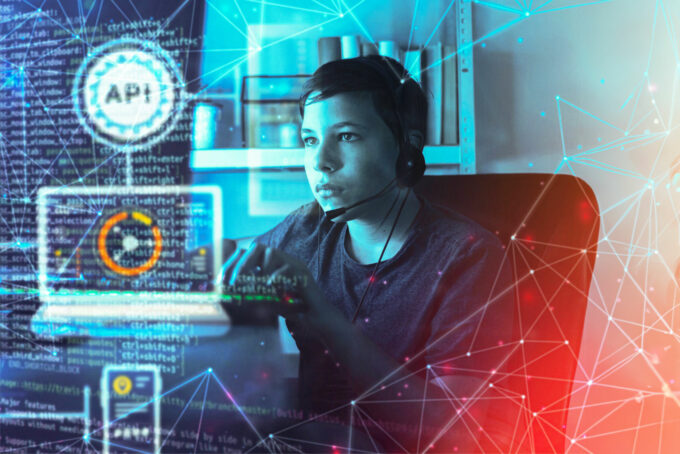
Horizon Report 2019: How new Technologies Lead to a Redesign of Learning and Teaching
Which trends, challenges and technologies are important in higher education? The Educause Horizon Report 2019 Higher Education Edition sheds a light on digital fluency, the role of OER in closing the achievement gap and the redesign of learning and teaching as well as of the instructor’s roles.
by Birgit Fingerle
The Educause Horizon Report 2019 Higher Education Edition was published at the end of April 2019. Although the report’s name was slightly changed, its format has in large parts remained the same as in former editions: forecasting trends, challenges and developments in technology with impacts in higher education. But this time an additional section called “Fail or Scale” was introduced to reexamine previous panel forecasts and why some of them have not occurred or occurred yet as forecasted.
Either way, a lot of the reports subjects were already addressed in the report’s 2018 edition, sometimes with a different time horizon. We take a closer look at a selection of the report’s subjects which seem to be the most interesting for libraries and the open science movement.
Redesigning learning, teaching and roles
As one of the mid-term trends (which are driving ed tech adoption in higher education for the next three to five years) “advancing cultures of innovation” is listed. This trend seeks to establish a culture of innovation for learners and to prepare them better for the workplace by learning skills beyond conventional disciplinary knowledge. Facilities like venture labs, incubators, and other forms of business partnerships also encourage industry collaboration and enable students to learn beyond traditional education.
One short-term trend included in the report (which will be driving ed tech adoption in higher education for the next one to two years) is “redesigning learning spaces”. This trend is about designing and evaluating spaces like classrooms, libraries, and common spaces where learning takes place to facilitate active learning and collaboration. In order to be successful not only investments are needed but also obtaining stakeholder buy-in and transforming pedagogical approaches. This short term trend of physical learning space design might lead to another one focusing on virtual learning spaces in the future.
The “evolving roles of faculty with ed tech strategies” is seen as a difficult challenge. Involving faculty in the selection and implementation of educational technologies may face a range of challenges, when for example implementing a new courseware platform or building a completely new programme by for instance applying competency-based learning. Nevertheless, faculty should be included in the evaluation, planning, and implementation to help overcome barriers to adoption. Furthermore, the panelists observed that training and professional development should be provided to foster the adoption of technology.
The trends and challenges mentioned above are also connected with the wicked challenge of “rethinking the practice of teaching”. As student-centered approaches gain in importance and teaching practices are evolving, the role of the instructor also needs an update towards being more and more a facilitator and a curator. Instructors need access to sustained support and to the tools and resources necessary to design a student-centered environment. Otherwise they have to create these on their own.
Improving digital fluency and closing the achievement gap
There are a lot of challenges impeding technology adoption in higher education waiting to be solved. As a solvable challenge “improving digital fluency” is listed. This refers to the ability to leverage digital tools and platforms for communicating, designing, making informed decisions, and solving problems. Just relying on maintaining basic literacies on how to access and evaluate information is no longer sufficient. Learners need to gain new skills to meaningfully engage with new tools and to fully understand the digital environment. Institutions must also leverage their strategic technologies in order to support critical thinking and complex problem solving.
This is also connected with the difficult challenge focusing on student success in higher education named the “achievement gap”. As the cost of course materials also contributes to the achievement gap, open educational resources (OER) play an important role. Furthermore, OER materials are maturing. To support students, institutions are also adopting adaptive courseware, personalized learning pathways, and digital tutoring solutions. Nevertheless, closing the achievement gap continues to be a difficult challenge as degree completion is also influenced by other factors.
Important developments in educational technology
The report also goes into detail with a number of developments concerning educational technologies. Among these are:
- Mobile Learning (time-to-adoption horizon – one year or less): With mobile devices being more and more affordable and powerful, there are more possibilities for engaging and collaborative learning experiences.
- Mixed Reality (time-to-adoption horizon – two to three years): While the cost of using these technologies is declining, another limitation of using them in education is that they often only allow for a small number of users. Institutions that deploy MR technology on campus make it available to the most users if they provide it through their library or other campus space open to students, like a makerspace or a media lab. For instance, the North Carolina State University Libraries offer the equipment and spaces in which to use it. Augmented and mixed reality is also a subject in the new “fail or scale” section of the report, because it hasn’t arrived as fast as earlier reports predicted.
- Artificial Intelligence (time-to-adoption horizon – two to three years): While skepticism remains in regard to AI’s application in education, more educational AI applications are in practice. But students need to have even more opportunities to work with AI to gain experience in its use for their future workplaces.
- Blockchain (time-to-adoption horizon – four to five years): Blockchain could provide the means for lifelong learning students to maintain an accurate record of their knowledge and skills which do not only include formal academic training but also badges, stackable credentials, MOOC certificates, and industry certifications.
- Virtual Assistants (time-to-adoption horizon – four to five years): In the future, virtual assistants are expected to be used in different learning scenarios, for research, tutoring, writing, and editing. Virtual tutors and virtual facilitators are expected to soon be able to generate customizable and conversational learning experiences.
Further Information:
- Download of the report (PDF)
- New ’Horizon Report’ Looks Back on What Past Predictions Got Wrong, by Jeffrey R. Young
View Comments

Innovation Workshop: How Libraries can Actively Shape Digitalization
The visibility of libraries in the age of networked working, new genuinely digital...



